|
Word Gems
exploring self-realization, sacred personhood, and full humanity
Einstein
|
Einstein said that the concept of "empty space loses its meaning." Space is popularly viewed as "nothing," or is it a "thing," an object of the cosmos?
|
return to "Einstein" main-page
|
quotations from scientists on the nature of "space"
“In modern physics, there is no such thing as 'nothing.' Even in a perfect vacuum, pairs of virtual particles are constantly being created and destroyed. The existence of these particles is no mathematical fiction. Though they cannot be directly observed, the effects they create are quite real. The assumption that they exist leads to predictions that have been confirmed by experiment to a high degree of accuracy.” Richard Morris
“We are all linked by a fabric of unseen connections. This fabric is constantly changing and evolving. This field is directly structured and influenced by our behavior and by our understanding.” Dr. David Bohm
“Space is not empty. It is full, a plenum, as opposed to a vacuum, and is the ground for the existence of everything, including ourselves. The universe is not separate from this cosmic sea of energy.” Dr. David Bohm
"The total field [is] the only means of description of the real world. The 'space' aspect of real things is then completely represented by a field, which depends on four coordinate-parameters; it is a quality of this field. If we think of the field as being removed, there is no "space" which remains, since space does not have an independent existence." Albert Einstein
"It is clear that the space of physics is not, in the last analysis, anything given in nature or independent of human thought. It is a function of our conceptual scheme." Albert Einstein
|
|
Kant's views on Space
with commentary offered by Andrew Janiak, The Stanford Encyclopedia of Philosophy
Editor’s note: The philosophical work of Kant, of the early 1700s, greatly influenced the thinking Einstein, nearly 200 years later. Kant offered a forerunner-concept of space as illusion, a mere construct of the mind.
Kant: “Space is not something objective and real, nor a substance, nor an accident, nor a relation; instead, it is subjective and ideal, and originates from the mind’s nature in accord with a stable law as a scheme, as it were, for coordinating everything sensed externally.”
Janiak: “In this one pithy sentence, we find a list of many important early modern questions concerning space. Is space ‘real,’ or is it ‘ideal’ in some sense? Is it a substance in its own right, a property of some substance, or perhaps neither? Is it somehow dependent on the relations among objects, or independent of those relations? What is the relationship between space and the mind? And finally, how do these various issues intersect with one another?”
Kant: “Now what are space and time? Are they actual entities? Are they only determinations or also relations of things, but still such as would belong to them even if they were not intuited? Or are they such that they belong only to the form of intuition, and therefore to the subjective constitution of our mind, without which these predicates could not be ascribed to any things at all?”
Editor's note: Kant uses the term "intuition" in a special way, meaning, an innate construct or category of the mind, around which knowledge/experience is gathered; something imposed on experience rather than derived from it.
Janiak: “The view that space and time are actual entities is meant to represent the Newtonian position, and the view that they are determinations or relations of things, the Leibnizian position. Later in the Transcendental Aesthetic, he refers to the Newtonians as the ‘mathematical investigators’ of nature, who contend that space and time ‘subsist’ on their own, and to the Leibnizians as the ‘metaphysicians of nature,’ who think that space and time ‘inhere’ in objects and their relations.”
Kant: “Space is not an empirical [i.e. is not fact-gathered by observation] concept which has been derived from outer experiences.”
Janiak: “The idea here is that space for the subject [i.e. the percipient] is not something we experienced and then abstracted as an idea. Instead, it's something that we have to bring to our experience to experience anything in space."
Kant: “Space is a necessary a priori representation that underlies all outer intuitions. One can never forge a representation of the absence of space, though one can quite well think that no things are to be met within it. It must therefore be regarded as the condition of the possibility of appearances, and not as a determination dependent upon them, and it is an a priori representation that necessarily underlies outer appearances.”
Editor’s note: “a priori” literally means “that which is before”; that is, before inductive reasoning, before a fact-gathering analysis. Space as an “a priori” representation would be a mental construct that we, the mind itself, brings to experience, rather than a concept of space as a result of experience.
Janiak: “Kant claims that although we can represent space as empty, we cannot represent to ourselves the absence of space [i.e., we cannot imagine reality without space, which would seem to suggest that the concept of space is built into how the mind works, its very substructure]. This point would undermine Leibnizian relationalism...”
Kant: “Those … who assert the absolute reality of space and time, whether they take it to be subsisting or only inhering, must themselves come into conflict with the principles of experience. For if they decide in favor of the first (which generally is the position of the mathematical investigators of nature), then they must assume two eternal and infinite self-subsisting non-entities (space and time), which are there (yet without there being anything actual) only in order to comprehend everything actual within themselves.”
Janiak: “Kant contends that the Newtonians conceive of space as a kind of quasi-object... He emphasizes that on the Newtonian view, space and time are akin to substances - in that they are independent of all objects and relations, on the one hand, and independent of the mind (and of intuition), on the other - and yet lack causal relations. They are also imperceptible, and certainly in the case of space, infinite. Thus for Kant, the Newtonians regard space as an infinite substance-like entity that is imperceptible and causally inert, a view that Kant regards as absurd on general metaphysical grounds. Numerous philosophers throughout the eighteenth century, from Leibniz to Berkeley to Madame Du Châtelet, concurred.”
|
|
quotations from physicist Peter Russell
offered during his lecture featured in the "space-time continuum" article
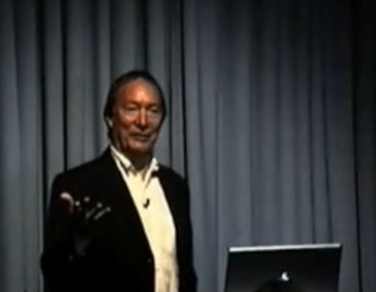
Peter said that the space-time continuum is not space, it’s not time, it’s not a mixture of the two, it’s something we don’t have a clear definition of, but, in any case, the space-time continuum impacts our five senses with certain precise amounts of space and time. And these amounts vary with the speed of the observer.
Editor's note: The space-time continuum seems to be the matrix or primal metaphysical nursery out of which our perceptions of space and time are created. Kant spoke of the "noumenon," a deeper reality behind and subsuming what the brain apprehends; as opposed to "phenomenon" which meets our senses at the surface of life, and we take it to be reality, but, in fact, it's merely a veneer-shadow of "the thing in itself."
space "stretches out" for us, presents itself, is "created," depending on how fast we're moving
Peter said, if the light from the back of the room is shining toward me, it races at 186,000 mps, and the space-time continuum will “stretch out” at a rate of 186,000 miles for each passing second. In essence, from our point of view, space and time are created. But if I’m in motion, then the amount of space and time unfolded will be less, and if I’m moving faster, then even less space and time will manifest.
Does light really have a speed?
Probably most shocking of all was Peter’s assertion that, from light’s point of view, light has no speed. It doesn’t go anywhere. It is omnipresent in the universe, inhabiting a timeless realm of eternal present moment.
From light's point of view, there is no space, there is no time. Space exists, or seems to, as a construct of the mind, for those travelling at speeds less than 186,000 mps.
|
|
quotations from Dr. Rupert Sheldrake
offered during his lecture featured in the "what is a morphic field" article
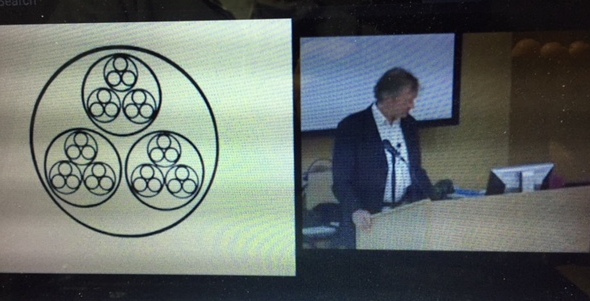
I’m going to speak today about morphic fields. [These] are the self-organizing fields at all levels of complexity. They underlie the organization of minds, of bodies, of crystals, of plants, of molecules, of stars, and of galaxies. They’re the fields that give things their shape, their form, their organization...
“Morphe” means “form"...
They’re like invisible plans or blueprints...
invisible morphic fields provide form and shape to everything in the universe
[Morphic fields are quantum fields of probability.] Nature is very unpredictable. That’s why, even with satellite photos, the weather forecasters don’t always get it right, because the weather is a chaotic system. It doesn’t obey simple deterministic principles; nor do breaking waves, nor do nervous systems, nor do biological organisms. Everything’s probabilistic. If you look at all the particular leaves on a particular tree, they all have the same genes, they all have the same morphic fields, and yet every leaf is different, the vein pattern is different; they’re even different on different sides of the same leaf. They all have the same general form, the same probability structure, but they’re individually different. Morphic fields impose pattern on probabilistic processes; they impose pattern on developing organisms; they impose pattern on the activity of the nervous system. So, they underlie behavior, as well, and underlie social organization...
Editor’s note: To restate: “Morphic fields" are a kind of "architectural plan" bringing shape and form to all entities in the universe, both inanimate and living. While "morphic fields" can be applied to organic structures, most often the term "morphic fields" will refer to the inanimate -- stars, galaxies, atoms, molecules -- while "morphogenetic fields" will denote the "coming into being" of shapes of animate entities. However, "morphic fields" also applies to the behavior, instincts, and social activity of living entities. In Dr. Sheldrake's "The Presence Of The Past," he links all this with "the hypothesis of formative causation. According to this hypothesis, the nature of things [i.e., shapes, behavior, mind patterns] depends on fields, called morphic fields."
|
|
"What is Nothing?" a lecture by physics Professor Jim Al-Khalili
the following is a very brief summary of his lecture, posted on youtube

Aristotle taught that “nature abhors a vacuum,” that, from one perspective, nature tries to fill itself. However, a wider view reveals the opposite to be true, that a vacuum is nature’s default state. (And yet some call space a "plenum.")
Not only is the vast majority of outer space seemingly a void, but all matter, even the atoms of our bodies, is 99%+ empty space.
Torricelli and Pascal in the 1600s devised experiments revealing that air has weight and mass; that, air and the atmosphere was not “nothing.”
In the 1800s and before, it was believed that, just as sound waves require a medium through which to travel, so too light, which was understood to be a wave, must require some sort of medium for its transmission, which was called the “ether.”
By the late 1800s, Michelson and Morely had accurately measured the speed of light. They then tackled the question of offering evidence for the ether. They reasoned that when light traveled with the flow of the ether, like being propelled by a river’s current, light would move faster, and if traveling against the current of the ether, light would move more slowly. This is what they expected to find. However, light traveled at the same speed, no matter the direction of their measured beams of light.
Einstein’s 1905 paper suggested that the ether did not exist, that waves of light did not require a medium.
Einstein’s E=mc2 focused on the behavior of objects at high velocity, near or at the speed of light. But in the next several years a new physics was born, quantum mechanics. It demonstrated that in the world of the very small, particles traveling at the speed of light did not totally conform to Einstein’s predictions.
One of the fathers of quantum theory, Werner Heisenberg, spoke of his “Uncertainty Principle.” At the level of the very small, the more we know about where a particle is located, the less we know about how it’s moving. Heisenberg asserted that this lack of precision was not due to faulty measuring devices but that nature itself is fundamentally based on uncertainty, on fields of probability. If the location of a particle were known, then at best we could predict only its movement in terms of probability, with no certainty.
Einstein balked at the notion of uncertainty at the core of reality. A crisis developed in physics with two seemingly opposing branches, Relativity and Uncertainty.
How could these two disparate views of reality be married?
English physicist Paul Dirac in 1928 began to bridge the divide. His famous “Dirac Equation” is sometimes called “the most beautiful equation in the world.”

Dirac’s mathematics predicted a continual virtual popping into existence, from the seeming void, matter and anti-matter particles, most of which would almost instantly annihilate each other. However, one in a billion of these particles would not be destroyed but remain. These survivors become the matter of the universe, the material stuff of which all things consist.
.jpg)
|
quotations by Paul Dirac
“The measure of greatness in a scientific idea is the extent to which it stimulates thought and opens up new lines of research.”
“Living is worthwhile if one can contribute in some small way to this endless chain of progress.”
“When you ask what are electrons and protons I ought to answer that this question is not a profitable one to ask and does not really have a meaning. The important thing about electrons and protons is not what they are but how they behave, how they move. I can describe the situation by comparing it to the game of chess. In chess, we have various chessmen, kings, knights, pawns and so on. If you ask what chessman is, the answer would be that it is a piece of wood, or a piece of ivory, or perhaps just a sign written on paper, or anything whatever. It does not matter. Each chessman has a characteristic way of moving and this is all that matters about it. The whole game of chess follows from this way of moving the various chessmen.”
“People who equate all the different kinds of human activity to money are taking too primitive a view of things.”
“If one is working from the point of view of getting beauty into one's equation, ... one is on a sure line of progress.”
“In science one tries to tell people, in such a way as to be understood by everyone, something that no one ever knew before. But in poetry, it's the exact opposite.”
“Pick a flower on Earth and you move the farthest star.”
“The successful development of science requires a proper balance to be maintained between the method of building up from observations and the method of deducing by pure reasoning from speculative assumptions.”
“If you are receptive and humble, mathematics will lead you by the hand.”
“God is a mathematician of a very high order and He used advanced mathematics in constructing the universe.”
“Mathematics is only a tool and one should learn to hold the physical ideas in one's mind without reference to the mathematical form.”
“The mathematician plays a game in which he himself invents the rules while the physicist plays a game in which the rules are provided by nature, but as time goes on it becomes increasingly evident that the rules which the mathematician finds interesting are the same as those which nature has chosen.”
“It seems clear that the present quantum mechanics is not in its final form. Some further changes will be needed, just about as drastic as the changes made in passing from Bohr's orbit theory to quantum mechanics. Someday a new quantum mechanics, a relativistic one, will be discovered, in which we will not have these infinities occurring at all. It might very well be that the new quantum mechanics will have determinism in the way that Einstein wanted.”
Editor’s note: It is, for me, more than a small matter of interest, Dirac’s views on beauty in science, the limitations of mathematics (and this, by one of history’s foremost mathematicians), and how Einstein might yet be proven correct in his determinism. I’d come to the same conclusions; especially noteworthy is Dirac’s sense that, despite what appears to be a profligate randomness at the heart of quantum mechanics, if we could view things from a higher mountain, Einstein’s sense of determinism might yet be shown to be the overarching, controlling precept of the cosmos.
|
What is commonly viewed as “nothing,” or space, or the void, is a hot-bed of creative activity. Virtual particles, “quantum fluctuations” in the void, come into existence, spring from the matrix of hidden quantum fields of probability.
The “emptiness” and the “nothingness” of space contain the deepest mysteries and secrets of the cosmos.
|
Editor’s summary comments
What is space?
It may not be the “final frontier,” after all, but neither is it a “thing” in the Newtonian sense. The great scientists and philosophers see it as an underlying matrix, a hidden field of probability and potential blueprint, a womb of the cosmos from which material reality issues.
If we were travelling at the speed of light, there would be no distance, no space, no time, for us; as such, space exists only for the mortal plodders lumbering along at snail-like speeds.
Space is a mental construct that presents itself, is disgorged from the “space-time continuum,” at pre-determined rates, such that, no “thing” can go faster than the speed of light: the faster we go, the more space shrinks, or more slowly unfolds; the slower we go, the more space stretches out before us.
Space is an innate concept “built into” the mind – Kant called these “intuitions” and “categories,” around which experience clings – allowing snail-like mortals to make sense of reality.
Space is a quantum field of probability, a hot-bed of matter-antimatter particles continually appearing and then annihilating each other, but with one in a billion surviving to form what we call "matter." Space is a "plenum, not a vacuum." It’s like a maternal womb from which all life, all material object of the cosmos comes into being. See discussion in the “Evolution” article.
How shall we understand the concept of space?
The great thinkers caution against making space into an object. It’s part of Kant’s “noumenon,” the hidden “thing in itself” which we cannot access, and this is why Einstein and his colleagues warn that we cannot directly know the “spacetime continuum.”
Even so, dire caveats accepted, I would like to try to offer analogy of what space is like.
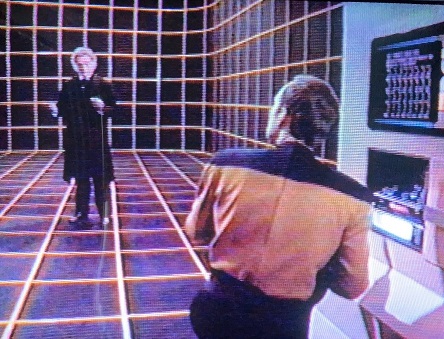
STNG, episode 138, "Ship In A Bottle"
Maybe you'll recall the storyline with Moriarty and Reg in the holodeck. Notice the yellow lines, the matrix of potentiality, of the computer-generated reality.
The Enterprise's holodeck, with its yellow lines as defining parameters of possible experience and object, I think, is something like what the great scientist-philosphers imagine space to be. What we call space is a quantum morphic field, a womb of potential materiality.
|
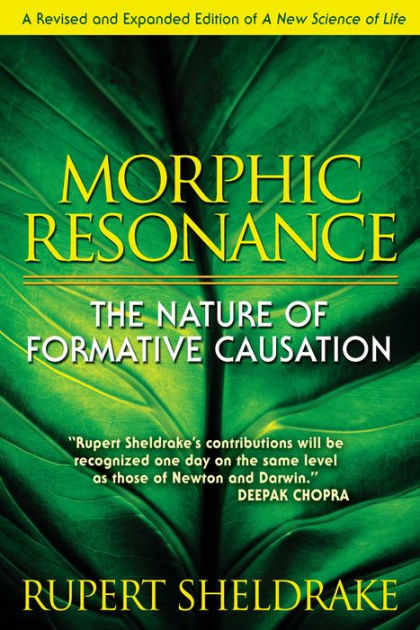
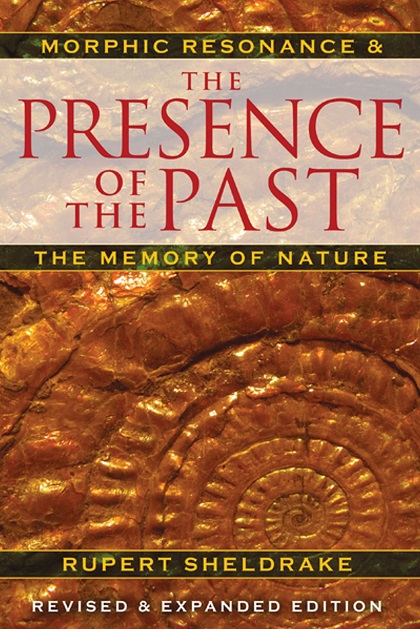


.jpg)
